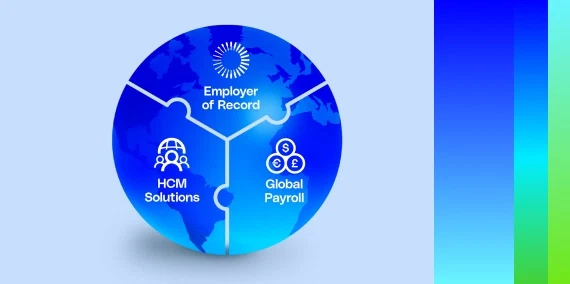G-P and Frost & Sullivan are aligned in their missions to guide the world’s top companies toward transformational growth. In the fourth segment of this webinar, Melanie Turek, Senior Fellow and Vice President of Consulting at Frost & Sullivan, and Dev Das, Vice President of Customer Experience and Operations at G-P, sat down to talk about how to ensure employees stay engaged in a global hybrid workplace.
Remote work and Employer of Record solutions have empowered leaders to expand worldwide — reaching diverse talent and accessing new markets to grow their business.
But here’s what global leaders often struggle with: How do you keep remote, global employees engaged?
Many believe that employee engagement is easier to promote in an in-person setting. Luckily, there are common principles that can be applied in any context. In this session, Turek and Das delved into these principles and shared their insights on:
- Implementing different methods to engage remote, global employees
- Embracing cultural differences to foster engagement
- Driving retention through employee engagement
Implementing different methods to engage remote, global employees
“[Employee engagement] has to be multimodal, multichannel, multimedia formats, and it’s got to appeal to different sorts of folks.”
The fastest way to get a remote or hybrid employee to check out is by making them feel overworked or taken for granted.
Work styles and communication methods are not one size fits all — especially if your teams are in different regions of the world. Trying to shoehorn a global employee into a specific work style can lead to frustration and hinder their sense of belonging. Instead, don’t be afraid to give employees the freedom to work the way that works for them.
For some, a virtual lunch-and-learn is a great way to get work done and bond with co-workers. While others may not want to be on camera at all and prefer other forms of engagement.
Scheduling regular check-ins and opportunities for feedback also help boost engagement and keep employees from becoming siloed in their work. Make sure global employees maintain a good work-life balance by allowing them to work within their own time zone. Setting clear boundaries is essential so employees can disconnect and recharge.
Embracing cultural differences to foster engagement
“Cultural awareness, norm setting, and bringing diversity and inclusion even more front and center in everyday interactions becomes so important because there’s just much more of this cross-cultural, cross-time zone, cross-team work happening now.”
Hiring employees from different countries does more than just add to the talent pool, it also provides a richness of culture and ideas. To best tap into these benefits, analyze workflows and processes to determine:
- Where managers should be flexible: An employee’s level of engagement should not be measured by how often they speak in meetings. Provide regular training for managers on how to set global teams up for success .This can include offering flexible working hours, supporting temporary work arrangements, and learning more about the cultures employees come from.
- Where managers should set firm expectations: Flexibility is key. However, it’s also important to retain your corporate culture. For example, some companies may take a more structured approach to meetings and expect employees to read documents and provide feedback beforehand for efficiency. Others may be more accustomed to brainstorming on the spot and view meetings as more collaborative sessions. Training managers to be explicit about expectations can set a level playing field for employees of all cultures and ensure everyone is on the same page.
Driving retention through employee engagement
“The business case to create more interesting benefits [for employees] is just a very, very clear ROI.”
According to a study by the Society for Human Resource Management (SHRM), employers need to spend the equivalent of six to nine months of an employee’s salary in order to find and train their replacement. Hiring new employees is far more costly than retaining the ones you have, so it’s worth offering competitive benefits and perks to keep your current employees engaged.
Common in-person engagement strategies may not apply to remote employees, so you have to find a different set of perks that work for them. These can include
- Flexible time off
- Professional development opportunities
- Recognition and rewards programs
- Virtual team-building activities
- Wellness programs
Consider a global employee’s day, experience, and location to offer benefits that make them happy, productive, and more likely to stick around long term.
Remote and hybrid workplaces can still be highly engaging
An engaged workforce is an effective workforce, and having dispersed teams doesn’t mean engagement has to drop. By using different methods to boost employee engagement, you can embrace cultural differences, drive retention, and create a dynamic and productive work environment where employees worldwide feel part of the team and contribute to your company’s success.
For more insights on engaging talent, embracing change, and uncovering the value of an Employer of Record, watch the full webinar.
—
G-P and Frost & Sullivan share a common goal of guiding the world’s top companies toward global expansion and global success. Frost & Sullivan’s Growth Pipeline as a Service (GPaaS) value proposition allows customers to maximize their economic potential, navigate emerging megatrends, and shape a future based on sustainable growth.
G-P’s industry-leading Employer of Record (EOR) solutions and global employment products help companies hire, onboard, and manage global teams in 180+ countries, without setting up new entities. Stay tuned as we continue to lead the conversation around the future of work and the path to global growth with insightful conversations like these.











